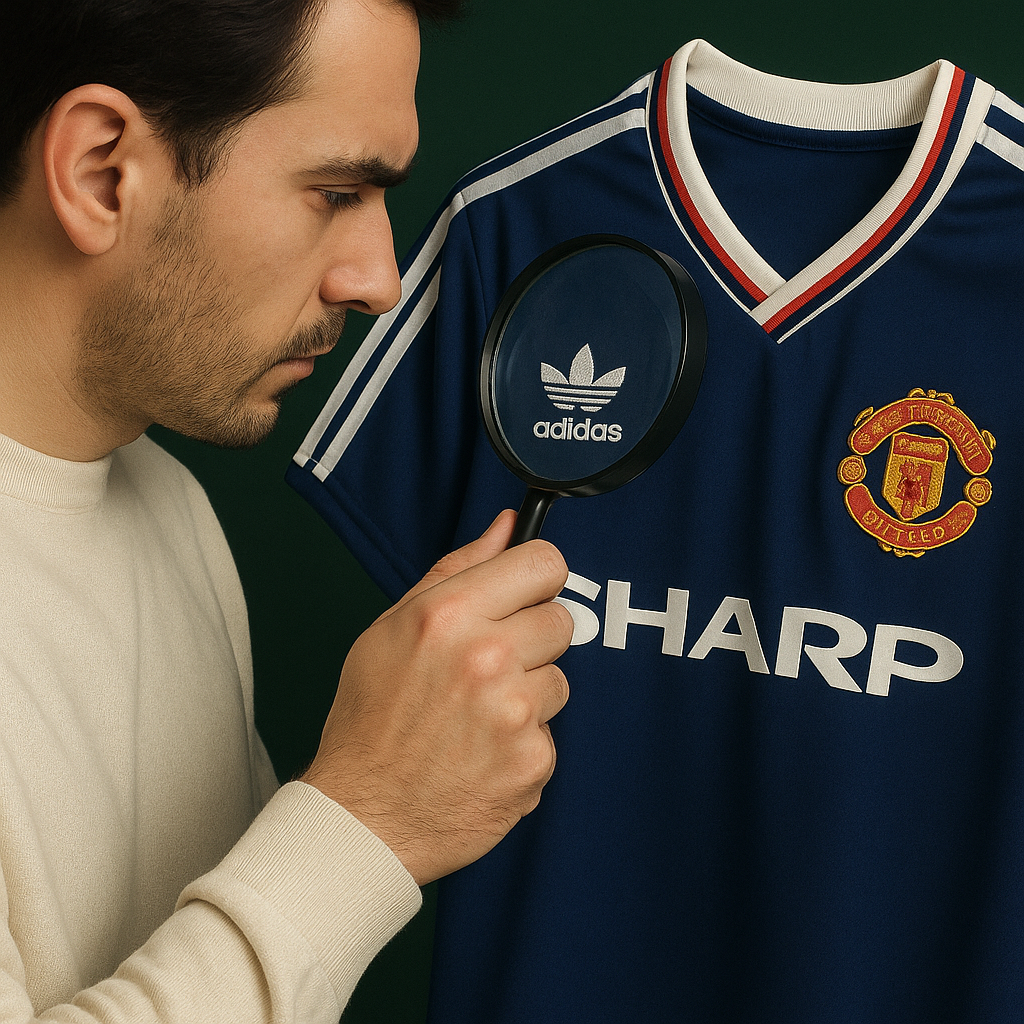
Collector’s Guide: How to Spot a High-Quality Retro Jersey
Share
Retro football shirts have become more than collector’s items — they’re cultural artifacts. But with the rising popularity of vintage kits comes an overwhelming wave of poor-quality reproductions and inauthentic designs.
If you’re serious about building a collection or just want to make sure you’re getting what you paid for, here’s a practical guide to identifying a high-quality retro jersey — one that’s worth wearing, displaying, or passing down.
1. Material Matters
High-quality retro shirts often use heavier polyester or blends with texture — very different from modern, paper-thin fabrics.
- Real shirts have structure and weight.
- Touch matters: if it feels like a flimsy sports tee, it’s probably a cheap replica.
2. Stitching and Construction
Examine the seams, sleeves, and collars. Authentic or well-made reproductions have:
- Tight, clean stitching
- No loose threads
- Solid hems and reinforced collar areas
Bad stitching is one of the fastest giveaways of a low-grade replica.
3. Badge and Logo Quality
Original shirts (or faithful recreations) use proper badge application for their time:
- 80s–90s: Flocked or sewn crests
- 2000s onward: Embroidered or heat-pressed, with depth and clarity
Avoid shirts with pixelated badges or logos that look “pasted on.”
4. Sponsor Print and Lettering
Sponsor logos should be clear, sharp, and proportionally placed. Many fake kits get this wrong:
- Wrong placement or sizing
- Incorrect logo versions for the year
- Peeling or uneven vinyl quality
Check fonts for name and number sets too. For example, Zidane’s 1998 shirt had a specific Adidas typeface — not Arial or Helvetica.
5. Historical Accuracy
Every detail should match the shirt’s era:
- Right badge variation
- Correct shirt cut (slim or boxy)
- Appropriate sponsor and typography
- Manufacturer branding (like Adidas Equipment in the early 90s)
Research the exact season or use trusted references. At RetroKits, every shirt is curated with this level of precision.
6. Label and Tag Inspection
Authentic or top-tier retro shirts have:
- Interior size/care labels
- Manufacturer label tags (Adidas, Nike, Umbro, etc.)
- Sometimes, serial or model numbers
No tags or generic labels are a red flag, especially if there’s no brand listed.
7. Fit and Cut
A retro shirt shouldn’t fit like a modern training tee.
- 90s kits: Boxy and wide
- 2000s kits: Slimmer, shorter sleeves
- Modern reproductions: Often use a hybrid fit
A bad replica often has a completely generic athletic fit that doesn’t match any era.
8. Print Quality (Customizations)
Authentic retro shirts — or faithful recreations — use correct printing methods:
- Flocked prints (soft, velvet-like)
- Sublimation (fused into fabric)
- No bubbling, cracking, or sticky layers
Avoid numbers that look freshly pressed with home vinyl.
9. Smell and Feel
Yes, it sounds strange — but serious collectors know. A cheap factory replica often has a strong chemical smell from low-grade processing. A properly made retro kit feels and smells like a garment — not plastic.
10. Buy From Trusted Sources
Last but most important: buy from specialists, not random online sellers.
If the listing has no clear photos, no history, and the price is suspiciously low — it’s not worth it.
RetroKits guarantees hand-checked quality, historic accuracy, and authenticity. Because these shirts deserve respect.
